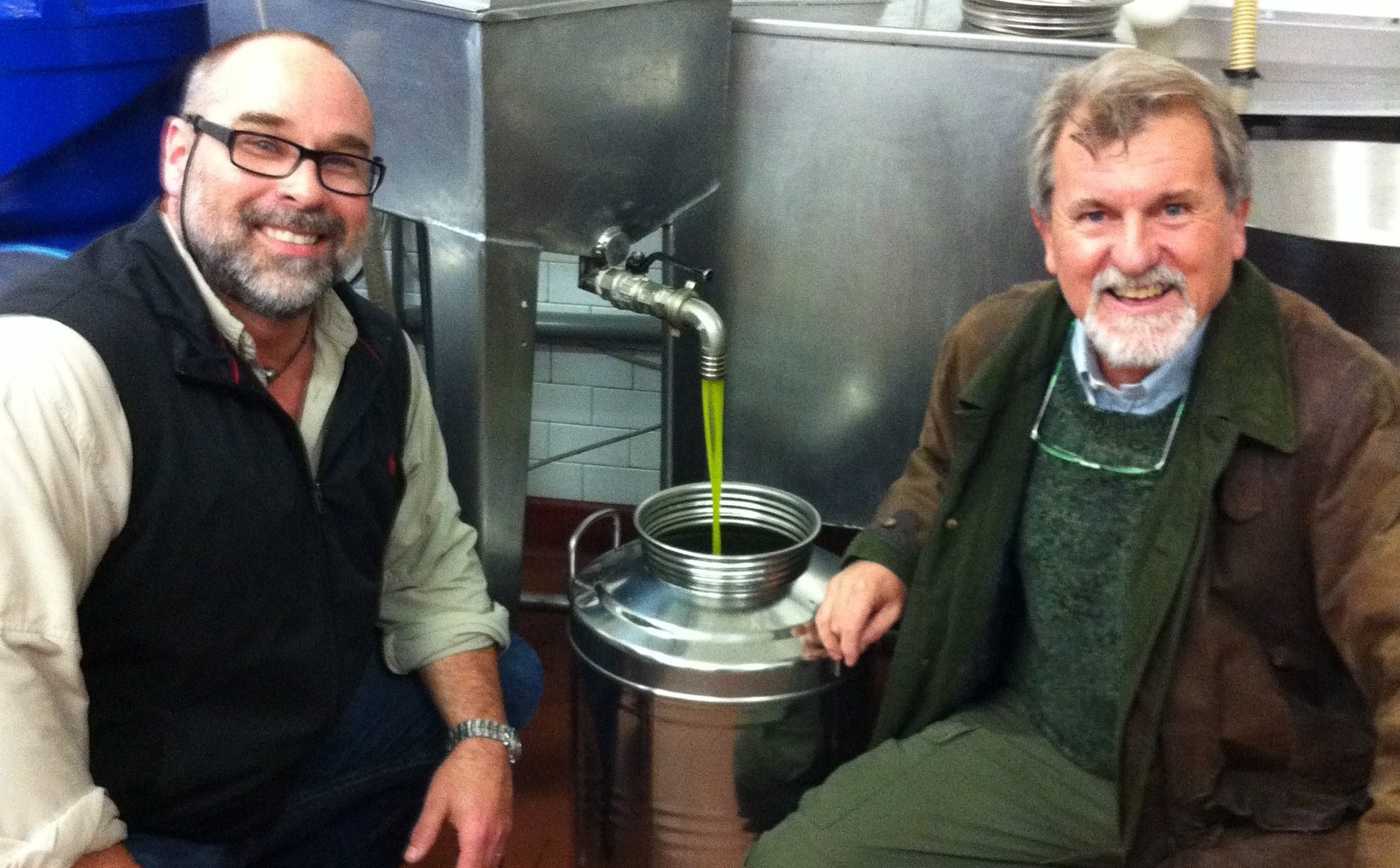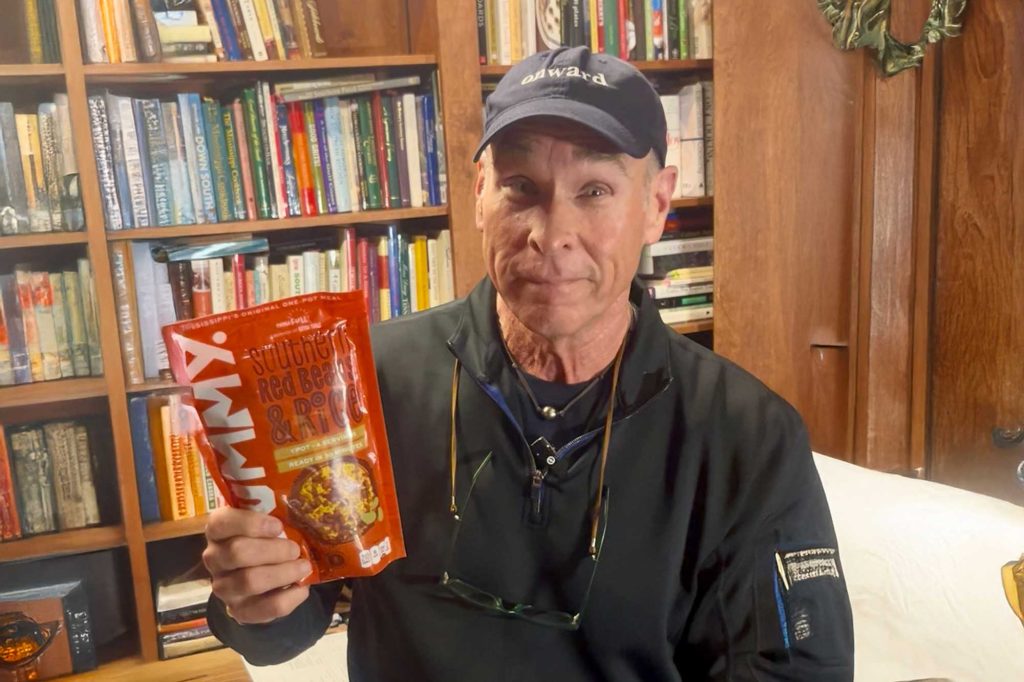“Start with a little oil in the bottom of the skillet,” I recently told my son, while showing him how to cook a dish in our home kitchen. That day I started the process with a little extra-virgin olive oil in the bottom of the pan. Typically, I never sauté with extra-virgin olive oil, but my friend Enzo Corti’s oil was in a can on the counter, the dish I was cooking had bold flavors that wouldn’t suffer from using a “stronger” oil. I also have an over-abundance of extra-virgin olive oil in my kitchen right now. The dish turned out great.
While the vegetables were cooking in the skillet I had one of those brief, flashing moments of gratitude. I try to pray daily, and I typically just give thanks for life’s blessings in those prayers. But when life seems to be hitting on all cylinders, I am often struck with gratitude for the little things in the simplest situations. In that moment, I was grateful to be cooking with my son, and I was grateful for my friend, Enzo, who presses olives from the trees in his front yard in Tuscany. He only presses enough extra-virgin olive oil to supply his family— and a few close friends (thankfully, one of which is me)— throughout the year.
I grew up seeing bottles of olive oil in my childhood home, but it wasn’t used much. Much of what passes for extra-virgin olive oil over here is a weak and off-flavor representation of what true extra-virgin olive oil is, and can be. The extra-virgin olive oil of my youth bears no resemblance to what I have come to know and love in my adult years.
In the area of Tuscany that we visit most, the olives are harvested in late October and November. They call it “the season of the new oil,” and every trattoria and osteria brings their new oil out and pairs it with seasonal dishes. It’s never a hidden component, deep in the ingredient list. The “new” extra-virgin olive oil is used to finish a risotto, polenta, salad, soup, or meat dish, and is drizzled over the top at the end. The new extra-virgin olive oil is peppery on the back of the tongue and has a bold flavor that mellows with age. Once you grow to love it, every other “supposed” extra-virgin olive oil tastes like bland— or slightly bitter— canola oil.
Enzo is a third-generation olive grower and wine producer, He owns 1,300 olive trees in the yard outside of his villa That might seem like a lot, but it’s just enough to yield approximately 2,200 kilos of picked, ripe olives, each year. That will be enough to be used for a year’s worth of cooking in his home for his family (with a few liters leftover to send to friends in America).
In the fall of the year, olives are picked in a tight window of a few weeks. The roads are filled with trucks hauling ripe olives. The typical olive-hauling truck carries around 1,500 kilos. Two truckloads of olives are typically hauled out of Enzo’s yard and taken to the local frantoio (olive-oil pressing facility) to be pressed. There is a frantoio is in the middle of most Tuscan towns. They are operated like a co-op, and during the fall they run at full tilt. Trucks line up outside waiting their turn to unload their green and black bounty.
The Calosi frantoio in Tavarnelle is a small building that anyone would drive by 99 times out of a hundred, during any time of year other than the fall. Though in the fall, the trucks and tractors pulling trailers full of olives are lined down the small street waiting for their turn to unload their olives. Once the olives are dumped into a catch bin in the facility, they go through the process of being picked through, washed, and pressed. About an hour after the truck arrived, the bright green extra-virgin olive oil that was extracted from the olives, pours from a tap into large stainless-steel jugs. Approximately 1,500 kilos of olives will yield around 150 litres of extra-virgin olive oil. The oil will be stored in a dry, cool place, and be used throughout the year in the home kitchen of Enzo’s family villa.
It’s a process that has received just a small amount of modernization over the past two thousand years. Stainless steel replaced stone presses, and electricity sped the process up. But, in the end, olives are being pressed today almost as they were thousands of years ago.
The olive trees in that part of Tuscany are relatively young. An unusually hard freeze hit the area in the mid 1980s and killed off a lot of the olive trees. In areas such as Ostuni, in the southern part of Italy, the olive trees are over 2,000 years old. They are gnarled, and spilt, and beautiful. Though I am not sure if the oil they produce is any better than what we are used to in Tavarnelle.
As I type this column, Enzo, and his wife Annagloria, are on a plane, headed to America. After brief stops in Chicago, New York, and South Florida, they will head to Hattiesburg, Mississippi, to visit us. Finally. It’s a trip we’ve been planning since we met them years ago. We’ll show them the local sites, have some of their friends over for a party, and take them to New Orleans on Fat Tuesday. I might even pull out some of Enzo’s extra-virgin olive oil and whip up a jambalaya or etouffee. We will certainly give thanks, and be grateful for friends, and olive oil, and all of life’s blessings— great and small.



